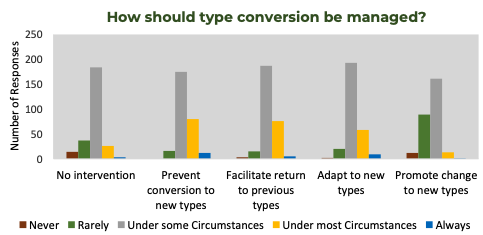From authors Jill M. Young and Jonathan D. Coop – School of Environment & Sustainability, Western Colorado University:
Changing disturbance regimes and climate across western North America are increasingly recognized to have the potential to drive major and lasting shifts in vegetation. Such changes can be referred to “type conversion”, yet lacking a formal definition, this term may be variously interpreted.
To better understand how land managers, researchers, and others perceive and define type conversion, we developed an online survey, administered in 2019.
View the survey results here.
Read the brief summarizing the results.

